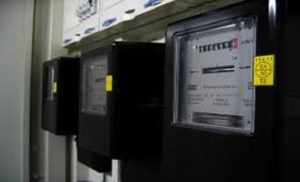The Indian market has now begun large-scale deployments of smart metering, largely driven by ambitious governmental targets to reach nationwide coverage within the next few years.

Asia-Pacific constitutes the largest market for smart electricity meters, followed by Europe and North America, Berg Insight said in a new report.
According to the Internet of Things (IoT) analyst firm, the installed base of smart electricity meters in the Asian markets — China, India, Japan and South Korea —will grow at a compound annual growth rate of 7.9 percent from 613.4 million in 2018 to reach 965.9 million in 2024.
Over the next six years, smart meter penetration among electricity customers in the region is projected to increase from around 67 percent in 2018 to 94 percent by the end of 2024, primarily driven by mass deployments in India.
At this pace, Berg Insight forecasts that the markets will surpass 1 billion installed smart electricity meters and reach a penetration close to 100 percent in 2025.
India to see massive installations of smart meters in the coming years
“With China now fully deployed and with the nationwide rollouts in Japan and South Korea well on their way, India is now entering the centre stage with some massive installations expected within the coming five years,” commented Levi Ostling, IoT Analyst, Berg Insight, in a news release.
In India, he said a major driver of the increase in deployments is government-owned energy services company EESL, whose demand aggregation and bulk procurement model is effectively addressing the cost issue of smart metering investments.
“After a few years of pilot projects, India is finally starting to see large-scale smart metering projects being initiated, driven by ambitious governmental targets to reach nationwide coverage of smart prepaid metering,” Ostling said.
So far, he said, EESL has procured 10 million smart meters to be deployed for utilities across India.
Cellular is expected to be the dominant communications technology in India’s mass deployments.
The country is also open to international vendors, “despite intense price competition and the introduction of a national smart meter standard in 2015.”
“With a preference for NB-IoT-ready meters already emerging in the market, the uptake of smart meters with cellular LPWA connectivity is expected to see a sharp increase as soon as the relevant network infrastructure is in place,” Berg Insight said.
Smart Metering in North America
North America was the first region in the world to move beyond traditional energy metering through the widespread introduction of automatic meter reading (AMR) that started in the 1980s.
Berg Insight forecasts that the installed base of smart electricity meters in North America will grow at a compound annual growth rate of 6.0 percent from 100.7 million in 2018 to reach 142.8 million in 2024.
The penetration of smart meters is currently about 60 percent and is expected to increase to 81 percent in 2024, primarily driven by large investor-owned utility projects in the US.










